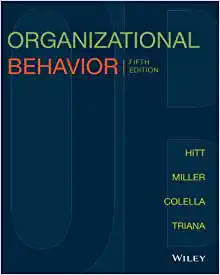Understanding how they gather information and evaluate alternatives can help learners become better decision makers. They will
Question:
Understanding how they gather information and evaluate alternatives can help learners become better decision makers. They will see if the scoring tells them, they lean toward being a sensing-feeling, sensing-thinking, intuitive-feeling, or intuitive-thinking decision maker. They will feel most able to make good decisions in situations calling for their now identified decision styles. It is in moments of decision incompatibility that they will notice weakness. Now, they also know if they pair with a person who has the offsetting style to balance their weakness with their strength, there should be a greater likelihood of more effective decision making. Why not put this to a test? Here is an original exercise that makes convenient use of the two sets of scenarios in the Thinking about Ethics segment of the chapter and this Resource Guide.
Are Two Heads Better than One?
1. Learners will have completed the Decision Style Assessment before this begins.
2. Divide the classroom into four quadrants: sensing-feeling, sensing-thinking, intuitive-feeling, or intuitive-thinking.
3. Ask learners to rise and gather in the quadrant closest to what the assessment indicates as their style.
4. Next, ask them to form pairs with persons in any style quadrant but their own.
5. The task for these balanced “opposites” is to run an experiment. They will consider each of the seven ethical decision scenarios in the text and/or the five you may copy from this guide. They should move through them rapidly, if possible, but not move to the next unless both agree upon the decision. When at an impasse, they should identify what sort of information one or both would require, and then go to the next.
6. After the pairs are done, ask them to reflect on how well this marathon decision-making exercise went for them. Are “two heads better than one,” when each has a different style of perceiving the problem and judging the value of alternatives?
Step by Step Answer:






